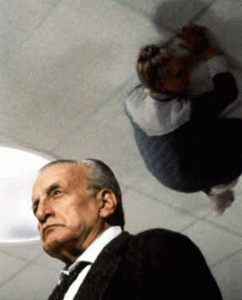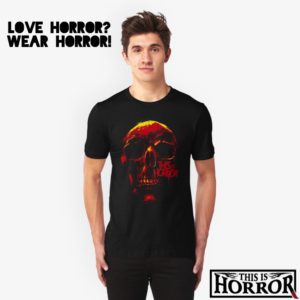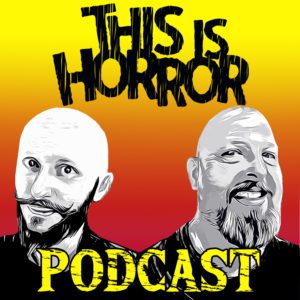 I have a confession. There are a few (well, many) horror tropes that I just cannot stomach at all. Not because they’re cliché – although, of course, they are – but because there’s something about them that’s actually, fundamentally, terrifying.
I have a confession. There are a few (well, many) horror tropes that I just cannot stomach at all. Not because they’re cliché – although, of course, they are – but because there’s something about them that’s actually, fundamentally, terrifying.
The first involves revenants, namely the twitchy-jittery and/or fast-moving variety. True, this is one of the most hackneyed techniques used in horror movies nowadays – but still. Logically I can figure out how the twitchy-fast effect is achieved. Most likely, it’s a combination of camerawork and post-production trickery. The film is sped up; actors’ movements are edited so they seem to randomly jump across the screen; filters or dark obscuring layers are added so the creatures are blurred, and hard to get a fix on. I know this, I can work this out, logically.
But, alas, fear isn’t necessarily controlled by logic.
Rationalising how Samara flickers out of the TV in The Ring – or how Kayako’s ghost jitter-crawls down the stairs in The Grudge – or how the spooky little girl in the video game F.E.A.R. shudders down hallways – or how spectral doctors flash across video screens in the (otherwise lame) House on Haunted Hill – doesn’t stop me from whimpering like a puppy when I see them. The same applies when zombies or ‘infected’ people scuttle and jerk in films like 28 Days Later or Zombieland, or when they race at incredible speeds, as it seems will happen in World War Z.
Whimpering.
Puppy.
These creatures’ super-quick movements play on the innate fear of being chased; of falling prey to a hunter that is stronger and faster than we are. This feeling of dread intensifies when the fast-movers appear in packs. Our survival instincts scream that we’re not only too slow to outrun them – we’re also doomed because we’re outnumbered. And yet it’s not just the sense of being pursued that makes these ‘monsters’ intensely scary. Seeing a film in which people are chased by wild dogs or wolves or demonic piranhas is nowhere near as frightening as watching zombies barrel after them at full tilt – even though the outcome of getting caught (being mutilated, ravaged, devoured, killed) is more or less the same in each case. The problem, then, isn’t just that the ghosts and zombies are fast or spasmodic. It’s the fact that they are – or were – people.
People shouldn’t be able to move like that.
Granted, death and curses and global plagues have altered these people in horrifying ways. That is, you wouldn’t expect to see them acting within logical social conventions: picking the grommets up from afterlife care; heading down to the 7-11 for a brain slushie; bemoaning their depressing unlives on ‘Being Human’. The frightening ones are deeply chilling because they are uncanny. They are almost right and still oddly wrong. They are familiar – we can easily recognise their humanoid forms, possibly even their previous identities – but simultaneously unfamiliar. They look like people, so our subconscious tells us they should behave as such. But, obviously, they don’t. They are freakishly unpredictable. They jerk. They move in all the wrong directions. They are essentially mindless and yet single-minded in their ambitions. We can guess what they want – revenge, blood, prey – but we cannot reason with them. With these creatures, the main ‘reason’ seems to be the primal one: kill, or be killed.
It’s an unsettling thing to witness from the comfort of our living rooms, even though, logically, we know we’re not in any real danger.
 This uncanny portrayal of almost-humans partially explains why a second overused horror trope – the ceiling-crawler – also inspires puppy-dog whimpering. Gravity and perception have conspired to convince us that people usually walk (or roll in wheelchairs or hobble on crutches) on the ground, not on ceilings. And when they do, their arms and legs generally swing in recognisable, rhythmic motions. Limbs aren’t meant to bend backwards at the elbow, or suction onto walls, or jut out at impossible angles. Again, on one level, the contorted configurations the body adopts when it scuttles across a ceiling are disturbing because they defy logic. More to the point, they just don’t look right. Add to this uncanniness the fact that in many films – such as The Exorcist, The Exorcist III, Constantine, Legion, Messengers – the ‘crawlers’ aren’t robust and muscular, but instead the sorts of people we tend to feel protective of in ‘real life’ (children, young girls, old ladies) and ceiling-crawling becomes even more unsettling. And if this wasn’t enough to put a churn in the belly, there’s the additional fact that crawlings are often caused by demonic possession or some other sort of soul-displacement. So, on top of the uncanniness, what is scary here is the loss of humanity and agency. These are bodies that look but don’t act like people. They are themselves but simultaneously under supernatural control – and, as such, beyond ours.
This uncanny portrayal of almost-humans partially explains why a second overused horror trope – the ceiling-crawler – also inspires puppy-dog whimpering. Gravity and perception have conspired to convince us that people usually walk (or roll in wheelchairs or hobble on crutches) on the ground, not on ceilings. And when they do, their arms and legs generally swing in recognisable, rhythmic motions. Limbs aren’t meant to bend backwards at the elbow, or suction onto walls, or jut out at impossible angles. Again, on one level, the contorted configurations the body adopts when it scuttles across a ceiling are disturbing because they defy logic. More to the point, they just don’t look right. Add to this uncanniness the fact that in many films – such as The Exorcist, The Exorcist III, Constantine, Legion, Messengers – the ‘crawlers’ aren’t robust and muscular, but instead the sorts of people we tend to feel protective of in ‘real life’ (children, young girls, old ladies) and ceiling-crawling becomes even more unsettling. And if this wasn’t enough to put a churn in the belly, there’s the additional fact that crawlings are often caused by demonic possession or some other sort of soul-displacement. So, on top of the uncanniness, what is scary here is the loss of humanity and agency. These are bodies that look but don’t act like people. They are themselves but simultaneously under supernatural control – and, as such, beyond ours.
I should point out that not all ceiling-crawling achieves this effect. It is theoretically shocking to have a baby crawling across a ceiling, with a head that spins around like Regan’s in The Exorcist; however, when this happens in Trainspotting, the effect is undermined by the fact that the ‘baby’ is so terribly fake. Its movements are laughably unnatural and mechanical; its face is cartoonish, a badly-constructed wax doll. And though dolls can certainly be both uncanny and terrifying – this one just isn’t. We understand the horror of the situation – the baby has died of neglect, after all – but the not-so-special effects are enough to throw viewers out of the moment, and so diminish the sense of unease.
Similarly, it is startling to see sharp-toothed aliens in the Alien films unfurl themselves from ship-walls and ceilings; heart-pounding to watch them stalk and ultimately pounce on the human prey below. These creatures get the blood and adrenaline pumping. And, sure, if the music and lighting and timing are just right, they make you jump. However, watching patently non-human creatures behave like gut-driven predators is somehow less frightening than seeing human dead hunt the living – or, at least, these aliens are frightening in a different way. They are terrifying, but we are not exactly repulsed when they crawl overhead. Watching aliens act in an alien fashion is fairly logical; it makes sense that they’ll do things beyond the sphere of expected human behaviour. By contrast, watching ex-people behave in an alien manner inspires feelings of revulsion. It makes us shudder rather than scream in surprise. In other words, it creeps us out.
 Likewise, the third horror trope I want to mention here: humans with black inky-scribbly eyes. I’ve intentionally added “scribbly” to this description to differentiate these characters from the many, many black-sclera-lensed baddies that have appeared on screens (large and small) in the past twenty-odd years. Fully-black eyes usually indicate a character’s ‘evilness’ or his/her possession by something ‘evil’, as is the case in Buffy, True Blood, Being Human, Supernatural, 30 Days of Night, Hellraiser – or, in Babylon 5, they depict non-demonic possession (but possession nonetheless) when Lyta Alexander is taken over by her Vorlon side. Eyeballs without irises or pupils – whether blackened, as these are, or blanked by white cataracts – are disconcerting if only because they represent blindness and, by extension, the fear many of us would feel at being unable to see. Even so, the former are often more unnerving than the latter because they are supernatural. Sure, they are familiar –because this trope is now commonplace – but nevertheless, strange. When those black lenses slip into place, we can no longer make eye contact with the person bearing them. We can’t engage with them on an intellectual or emotional level. We can’t see through the ‘window into their soul’. Whatever they were – whatever made them human – is masked behind this darkness. Instead of using reason and logic to communicate, we’re forced to relate to them on physical, instinctive, unpredictable, primal levels. And somehow, though they are blind, they can still see us… which is as freaky as hell.
Likewise, the third horror trope I want to mention here: humans with black inky-scribbly eyes. I’ve intentionally added “scribbly” to this description to differentiate these characters from the many, many black-sclera-lensed baddies that have appeared on screens (large and small) in the past twenty-odd years. Fully-black eyes usually indicate a character’s ‘evilness’ or his/her possession by something ‘evil’, as is the case in Buffy, True Blood, Being Human, Supernatural, 30 Days of Night, Hellraiser – or, in Babylon 5, they depict non-demonic possession (but possession nonetheless) when Lyta Alexander is taken over by her Vorlon side. Eyeballs without irises or pupils – whether blackened, as these are, or blanked by white cataracts – are disconcerting if only because they represent blindness and, by extension, the fear many of us would feel at being unable to see. Even so, the former are often more unnerving than the latter because they are supernatural. Sure, they are familiar –because this trope is now commonplace – but nevertheless, strange. When those black lenses slip into place, we can no longer make eye contact with the person bearing them. We can’t engage with them on an intellectual or emotional level. We can’t see through the ‘window into their soul’. Whatever they were – whatever made them human – is masked behind this darkness. Instead of using reason and logic to communicate, we’re forced to relate to them on physical, instinctive, unpredictable, primal levels. And somehow, though they are blind, they can still see us… which is as freaky as hell.
In Over Her Dead Body: Death, Femininity and the Aesthetic (1992), Elisabeth Bronfen raises a point about vision and blindness – which, she observes, “are integral to Freud’s discussion of the uncanny” – that sums up what I find so frightening about scribbly-black eyes like the ones in Joe Hill’s Heart-Shaped Box. It is the “undecidable border phenomena” mentioned in this discussion that is particularly relevant here:
whether something is animate (alive) or inanimate (dead), whether something is real or imagined, unique, original or a repetition, a copy, cannot be decided.
In other words, when we are confronted by human-shaped characters with scribbly-black eyes, it is almost impossible to determine – on first glance – if these people are alive or dead, seeing or unseeing, real or imaginary. Is this figure a ghost? Can they still see even though their eyes are squirming with ink? How do human eyes move like that? Is this thing still alive? Is this a hallucination? Is this person beyond hope of being saved? The narrative’s unfolding action soon answers these questions – but it was that first, uncertain glance that forced me to put Heart-Shaped Box down, unable to continue reading until morning.
There are many other horror tropes that, for similar reasons, could have been included here. Demonic voices emanating from children. Whispers coming from everywhere and nowhere. Shadows flitting without any bodies nearby to cast them. Revenants appearing in unexpected places (the bed, the bathroom, etc) but doing nothing but standing there, staring. No doubt there are even more than these – but let’s leave them in the darkness for now. There’s only so much dread this poor whimpering puppy can handle at once.
LISA L HANNETT
If you enjoyed Lisa L Hannett’s column, please consider clicking through to our Amazon Affiliate links and buying her fiction. If you do you’ll help keep the This Is Horror ship afloat with a very welcome slice of remuneration.
Buy Lisa L Hannett fiction (UK)
Buy Lisa L Hannett fiction (US)










2 comments
I love these type of creep you out of your seat and mind movies and I plan to make a movie of my own someday and the information you have shared on this site has helped me so far. Hooray to the jittery creeptastic films!!!!!
So you don’t think that horror movies are about what intelligent people feel when they encounter stupid ones.
You carry right on not thinking that, if you want, and imagining that there’s a common land to all this. There isn’t. Horror movies are about what an intelligent person feels when encountering a stupid one, especially when that stupid one has a certain amount of power (i.e. backing, because otherwise it would just be laughed at), and doesn’t knows it is stupid; has had that stupidity reinforced as valid, which is what happens 99% of the time.
That is all horror movies are about. The rest is just thick idiots waving their hands in the air and talking about ‘being creeped out’.
For intelligent people the whole world is a horror movie, and has been from birth.
Anything to say about that? Or – just not.